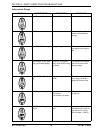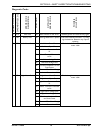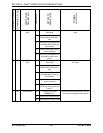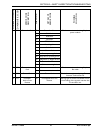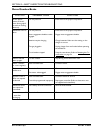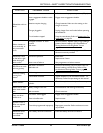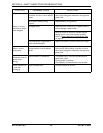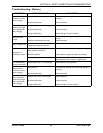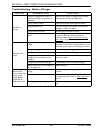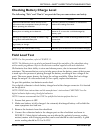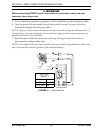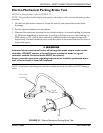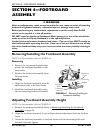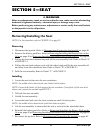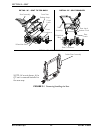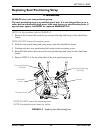
SECTION 3—SAFETY INSPECTION/TROUBLESHOOTING
At’m and At’m QT 26 Part No. 1125078
Troubleshooting - Battery Charger
SYMPTOM PROBABLE CAUSE SOLUTIONS
No LED’s on
Charger
Charger not plugged into outlet, or
disconnected from wiring harness on
wheelchair.
Make sure the charger is plugged into the outlet
and check the wiring on the wheelchair.
No AC power at outlet. Check for AC power with digital volt meter.
Damaged power cord. Check for damage on the power cord, replace if
damaged or send in for repair.
Charger LED’s burnt out. Send charger to Invacare for repair.
Charger may have internal fuse that is
blown.
Remove charger cover and check for fuses. If fuses
are present, Ohm out fuses and replace if
necessary. Refer to Electro-Mechanical Parking
Brake Test on page 29.
Batteries won’t
charge.
Tripped breaker in wiring harness, or
charger.
Check battery wiring harness breaker on the
wheelchair. If the breaker is tripped, determine the
cause and correct it prior to resetting the breaker.
Charger not plugged into outlet. Make sure charger is plugged into the outlet.
No AC power at the outlet. Check for AC power with a digital volt meter.
Charger power cord may be
damaged, or the connector may be
damaged.
Check for damage and replace if necessary, or
send in for repair.
Charger may have internal damage. Charge batteries with known good charger.
Battery voltage too low for charger to
start charging cycle.
Replace batteries.
Batteries have
short driving range
during a single
charge. Battery
Gauge falls off
faster than normal.
Consumer not charging batteries long
enough.
Instruct consumer to charge for 8-10 hours
minimum.
Batteries may be weak. Perform load test or check “Battery Quality Menu”
with the programmer. Refer to Field Load Test
on
page 27.
Check programming settings. Torque setting and power level setting may be too
high.



